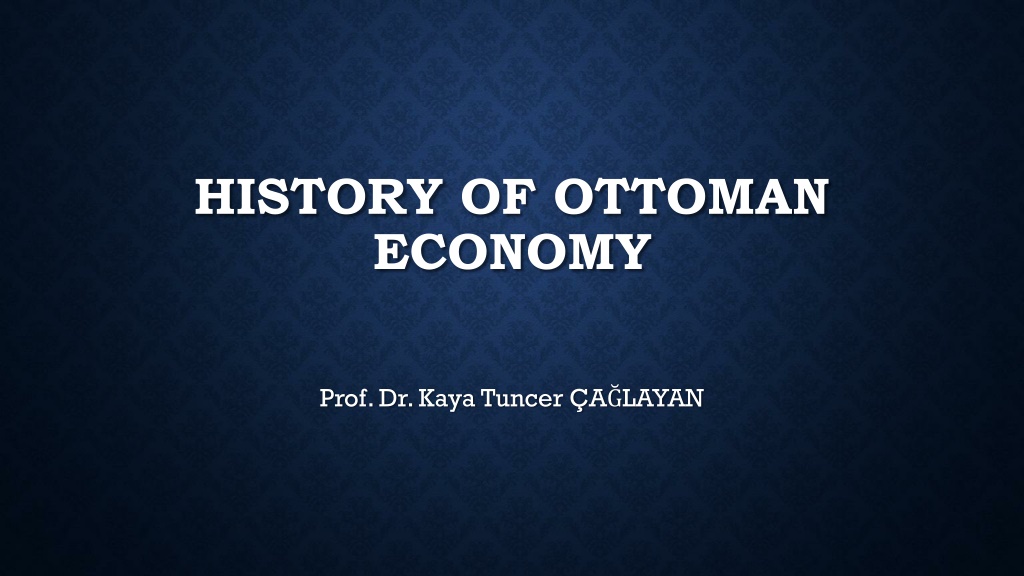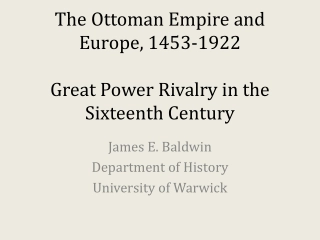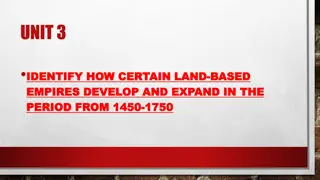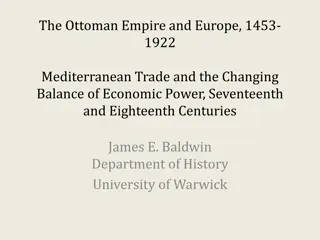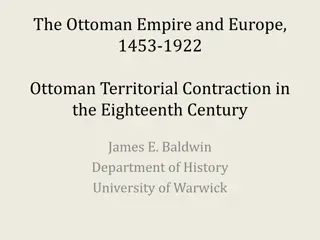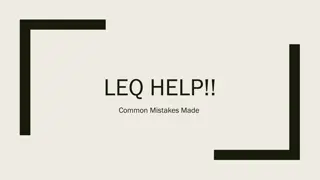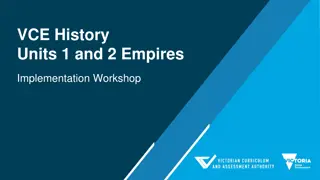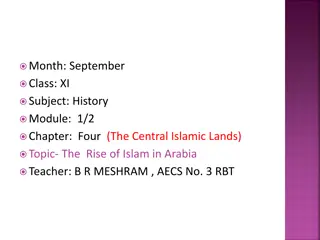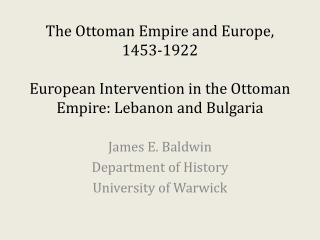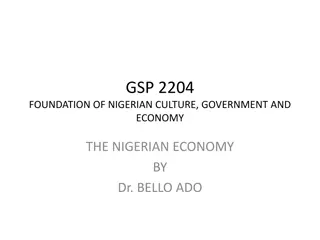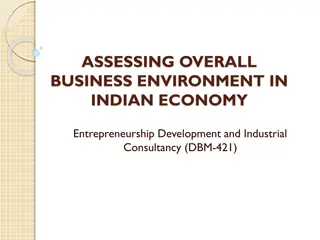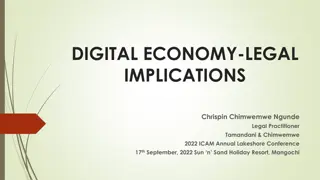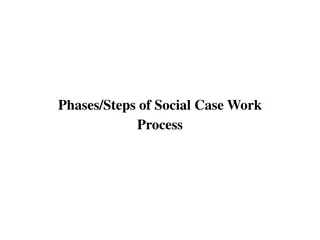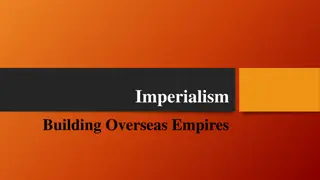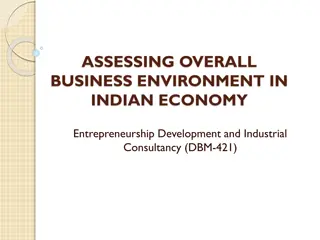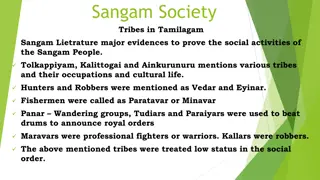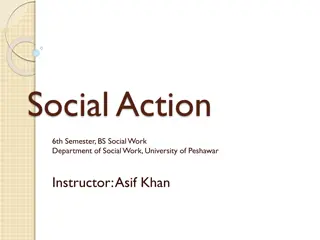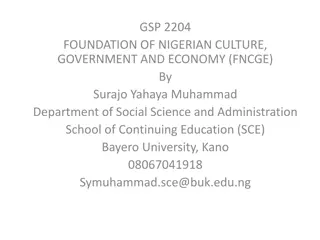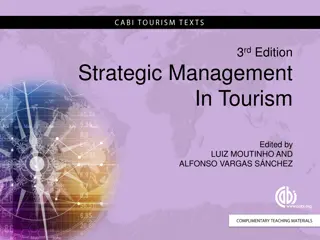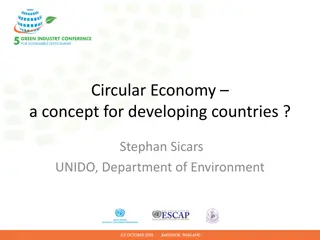Overview of the Ottoman Empire's Economy and Social Structure
The history of the Ottoman Empire's economy and social structure encompasses its Turkish and Islamic influences, as well as its geographical diversity across regions like Asiatic, East European, and African territories. The empire's centuries-long existence from 1300 to 1918 saw distinct periods of development reflecting in its economic and social dynamics, including the settlement patterns of Turkmen populations and the enforcement of relocation policies. The social structure in Anatolia reveals a blend of Turkish and Islam influences on villages, mountain pastures, and cities, with agriculture and livestock playing crucial roles.
Download Presentation

Please find below an Image/Link to download the presentation.
The content on the website is provided AS IS for your information and personal use only. It may not be sold, licensed, or shared on other websites without obtaining consent from the author. Download presentation by click this link. If you encounter any issues during the download, it is possible that the publisher has removed the file from their server.
E N D
Presentation Transcript
HISTORY OF OTTOMAN ECONOMY Prof. Dr. Kaya Tuncer A LAYAN
List Of Sources Halil nalc k; Osmanl mparatorlu u nun Ekonomik ve Sosyal Tarihi Mustafa Akda ; T rkiye nin ktisadi ve timai Tarihi (1453-1559), stanbul, 19974. mer L tfi Barkan; T rkiye de Toprak Meselesi, stanbul, 1980. Fernand Braudel; Akdeniz ve Akdeniz D nyas I- II, 1989-1990. Suraiya Faroqhi; Osmanl da Kentler ve Kentliler, stanbul, 1993. lber Ortayl ; T rkiye Te kilat ve dare Tarihi, Ankara, 2007. evket Pamuk; Osmanl -T rkiye ktisadi Tarihi (1500-1914), stanbul, 1993. Ahmet Tabako lu; T rk ktisat Tarihi, stanbul, 1986. smail Hakk Uzun ar l ; Osmanl Tarihi.
The Ottoman Empire General Features Firstly, The Ottoman Empire was a Turkish Empire The Dynasty was Turkish- O uz- Kay The official language was Turkish The main force was Turkish Secondly, Ottoman Empire was Islamic Empire The ruling class and majority of population Muslim The ideology closely related Islam. Sunni Islam-Tasavvuf understanding. Thirdly, christian population and charachter.
The Ottoman Empire General Features Geographically; a) Asiatic b) East European c) African d) Mediterrenean e) Black Sea f) Anatolian g) Balkanic State
The Ottoman Empire General Features Centuries: 1300-1800- Classic Ottoman Period 1800- 1918- Modern Ottoman Period.
Social Structure of Anatolia The Turks came into Anatolia in two great wave: Following the Malazgirt Victory (II. Century). As a result of Mongolian pressure (XIII. Century). Around 7 million Turkmen came in. Almost same number of native population. A certain policy of settlement of Turkmens (Beyliks) in Western Anatolia and Rumeli. The role of Dervishans First aimed Turkification Second aimed Islamisation
Social Structure of Anatolia Enforced relocation of population was a method Voluntarily relocation (tax privilege). Enforced relocation. 3 settlement units: Villages Mountain pasture Cities (big or small) Names of places either Turkish or Turkified.
The villagers belong same religion, relatives. Non-muslim villages are less bur crowded. Mixed religion rare, converted christians created. Agriculture and livestock common Grain/cereal- for people and army important. Common lands of the village protected together Certain(border) lines of village approved by Kad . A headman, an Imam, the sipahi and watchman live in the village, paid by the villagers. The villagers known as Reaya The state paid special attention to protect the villagers from (ehl-i rf) state and local lords despotism.
Nefs means small city for the Ottomans (200-300 house- town) 3 5 thousand population small city. 5 10 thousand population medium size city. Over 10 thousand population big city. City is center for industrial and trade acts as well as service sector To some extend agricultural production. For the Ottomans, a place of Cuma prays and usually, castle, wall, great mosque, square fountain, bedesten(market), bath, medrese, han, bazaar and imarethane were main cornerstones. A port was vital if the city on coastal. Bedesten contains big trademen, lux items traded; only big cities had bedesten.
The imarets vital in terms of trade and religion. The vak fs support them; a mosque comes with a bedesten etc. The Turkish Asiatic features observed, Kapal ar - bedesten architecture. The bedestens protected, so valuable papers, Money kept in secure. Kapal ar means covered market, with four doors. Openning a shop and trading controlled firmly/strictly. The country bedestens resemble capital ones. Private houses built low profile and wood used. The houses were closed to outsideWorld. A courtyard with high walls common. Only mosques, medrese, bath, kervansaray and bedestens were built from stone (Islamic understanding).
The Administration of Cities The Kad plays vital role. His assistant ehir Kethudas or ehir Emini organizers municipalityWorks. His another assistant Suba responsible for public security. Kethuda collects the taxes, intermediate between state and citizen, host the guest officials. The third assistant to Kad , was Muhtesip who inspect all ar , bazaar and craftsman. The fourth assistant a city architect who was responsible for the city is building operations. Finally p ba responsible for the cleaners of the city.
The Population Difficult to say the correct number of the population in the period of 1300-1453 since the sources were rare; The borders changes frequently. With the help of records written in the Tahrir notebooks some figures can be given in 16th century. Not for North Africa, Crimea, Eflak- Bo dan, Baghdad, Basra, Arabian peninsula. The population was stable until 16th century. Famine, epidemic disease and wars prevent the population increase. The indicator of this was low prices. The population in Anatolia 1520-1530 was about 12-13 million. 400 000 in Istanbul.
For Braudel, total population of the empire 20-22 million. For .L. Barkan 30-35 million in 16th century. Increase in population in the 16th century common. For instance, second part of 16th century, Anatolian population reached 14 million. Until 20th century the number stayed almost the same for various reasons. The expected life was low. The rate of child dead high. 17th century is Anatiolia saw Celali riots. Causing economic recession, collapse of law an order. Some places lost serious population.
18th century recovered the losses. But now the lands lossed created migration to the Balkans and Anatolia. 19th century, II. Mahmut s population counting showing around 7,5 million people lived in Anatolia. In 1884, however, the population increased to 11,5 million. In 1831, %66 muslim, %32,9 non-muslim.
Rural Population As a result of economic growth, prosperity and welfare, as well as strong law and order the Ottoman rural population rate increased %33 in the 16th century. %90 of the population lived in the rural. 19th century %80 rural, %20 city. Nomadic population rised %38. Settled muslim and non-muslim %60. Istanbul almost 500 thousand, Bursa 60, Edirne 30 000, Halep 40, and other less then 10 000. 8 cities over 15 000, 60 cities 5 000-15 000 16th century.
Social Stratification, Mobility, Solidarity No social classes but administrative classification. On the contrary to Europe; no cast system based landholding. Nor religious clergy. The Ottoman state intervenes into trade prices, ownership of lands, labour payments (Narh= the maximal price system,) (m sadere= confiscation/seizure). The Ottoman society consists of four groups(Erkan- erbaa): ulema(scientist), asker (soldier), t ccar, esnaf (tradesmen), ift i(villagers). A) Soldiers (Askeri S n f) who hold Sultan s berat certificate. Subdivides into two: statesmen (ehl-i seyf) and scientists (ehl-i kalem). The highest group who earn the most income. They had a small palace with an Enderun and Harem.
Social Stratification, Mobility, Solidarity B) Great tradesman, merchants (tacir). C) Moderate officers, servants and Ayan- Esnaf (notable). D) Craftsman, artisan. E) Reaya ( ift iler-farmers). (don t have Sultan s Berat). The Ottoman government prefers to keep farmers on the land but in some cases the farmers could pass to askeri classes. F) The workers: In cities and villages (farming, cleaning, porterage, house building) Prices high, no industrial workers class. G) Slaves, Servants The main source was wars. Economy of plents Trade matter, slaves bought and sold. Islamic understanding role
The Mentality of Ottoman Economy At classical period, no economic specialists, no economically functioning organs. Three principals: provisionalism, traditionalism and fiscalism. 1- Provisionalism (Food supplying approach) Provision of state and society s needs comes first. Export limited or forbidden; with high tax import free with low taxation (capitulations welcomed with this funds/ ?understanding?). Agricultural, mining and trade/craftsmen coordinate by state in terms of provisionalism. This approach believes that no change in technology, development in economy. In modern times, the producers aim to rise the profit, the consumers aim to buy cheap and high quality goods.
Provisionalism puts the consumers view into centre; the products should be high quality, cheap and abundant. Objective conditions for Provisionalism: A) Productivity low and difficult to rise. B) Any action to increase productivity may end in opposite: diminishing productivity. C) Transportation is expensive and hard. As a result of these conditions, to keep the society to survive, law and order, functioning the state, provisionalism inevitable for economic life. Provisionalism required increasing supply; quality and lowering prices. Therefore the Ottoman government prefered to intervene in production and consumption. nterventionist approach continued until 19th century.
For instance, the cereal production was under state control (for army and for people). The farmer could not leave his agricultural land (60-150 dunam) sell or endow. The most production unit was Kaza. With 3- 20 thousand population, 40-60 km2 land. The production first consumes in Kaza. If surplus then goes to the capital, Istanbul (palace and army) and then to the city. If still surplus, the rest of product given to trader who takes it other cities and even export it.
2- Traditionalism To preserve institutions, relations, understanding proved to be true or functional. Changing accepted as illness. Kadim- l eyyamdan beri, ol geldi i zre (from very old days). Equation (balance) be maintained between production and consumption. The famine feared most, avoided . The problem of transportation (camel case) To keep the balances, not only farmers, but also craftsmen in cities were under control. Their shops and capital almost equal. a) eria b) local traditions, conservationalism The source of economic rules
Fiscalism Main aim was to raise the state budget incomes (bullion) and to prevent it to fall. To preserve the precious mines. To ?-----? the demons of expenses But to cut (if possible) expenditure. 1) Some difficulties (economy s objective conditions) a) low productivity and impossible it of increasing. b) Difficulty of transport. c) Low prices of the market (monetary relations)
2) Subjective Conditions of Economy To keep the balance provisionalism, traditionalism and monetary/fiscal relations. Not allowed fiscal relations to develop A new social class such as tradesmen unwelcome. Narh policy allows %5-15 profit ?------? So it was impossible to increase the capital. Every economic activity considered only from taxation aspect (How much) Mir-i Mubayaa application s negative impact on economy. High incomes of Statesmen, local rulers and their responsibilities. The state did not ?----? a bourgeois (m sadere). Almsgiving: sadaka soup kitchens: imaret pious foundation: vak f Commendo : mu araka (emek/sermaye ortakl ) guild: lonca/ ahilik
European Mercantilism And The Ottoman Economy Ottoman plenty economy v- European mercantilism European mercantilism based on national economy mind. Believes that real prosperity is based on precious (bullion) metals. Keeps the bullion, limits the import, increases the export. Europeans got the benefits of Ottoman system allowing import. Main difference between them was; European governments considered the national economy as a company thus accounting incomes and expenditive Ottomans did not develop on economy doctrin similar to European Mercantilism. The Ottomans did not pay enough attention to trade balance safeguarding industrial production, maintaing labour.
Lack of private bourgeois caused the Ottoman officials to dominate the economy so mercantilism understanding fell to develop. Said that the Ottomans were out of Capitalism. Europeans started to follow monetary economy, 1580S cheap American silver helped to convert the system. The priority was given to conquer new lands, by this way increase state income.
MERCANTLSM One reason for the Ottomans to ignore mercantilism was that imported items were not produced goods. Guilds activities were important but the state failed to support their productivity. Yet, until 1770s, the Ottoman economy was srong enough to stand against Eurpean economy (89).
Land And Agricultural Production Land and its ownership: No single system. Different traditions, way of conquerence let seperate applications. Lands with T mar and without t mar had different military, administrative, and 3 types of Land 1- Miri (State) 2- M lk (privated land) 3-Vak f (endowment) Miri arazi B) normal vatanda a (any person) A) tapulu (tapu resmi, aileye)
Tapulu arazi holder pays r and 1/10 tax. Mulk land can be sold, endowed, 4 ways: Sultan s favour, Sultan s approvel s sales contract; converting a waste land to fruit ranch, garden. Vak f land: vak f reayas , the tax money goes toVak f. A) Reaya Farms ( ift d z) Twin cows 1- Ala farms: 60- 80 dunam 2- Evsat farms: 80- 100 dunam 3- Edna farms: 100- 150 dunam
Easy year Resm-i ift, and r (92). Nim ift: half farm/ By the time nim ift increased. His son given priority take the t mar. ift hane system ( nalc k) Protect reaya ncrease production Maintain equality %50 of state budget comes from r.
The Ottoman Agricultural system based on small farm units. Preventing land patronising (causing political influence) was the main principal. B) Vineyard- Garden(ing) Private property, supported by the rulers converty waste lands to fruit garden, cultivated in and around towns and cities. Greengrocery popular because of private ownership. Ownership of a tree belongs to who planted it. r-i Ba at and Ba ceha paid to collector as tax.
C) Zemin Agricultural land smaller than nim- ift Farmer called Bennak, muslim and married but not given a iftlik. He pays one ak e per 2 dunam (Resm-i zemin). ) Hassa iftlikler (Farms) Plantation cultivated directly by the sipahi The sipahi can prefer to let his hassa farm ortak l k share cropping . These lands, mill, ba -bah e unsold K l yeri properties, accounted bringing 200 ak e income per year.
D) mera(Statemen) and Ayan(notable) Farms In 18th and 19th centuries statesmen and ayans managed to hold big farms, though illegal. Following the Celali Revolts (1519-1608), the lands passed toYeni eri soldier and ayans. Following the Land Act (Law) %70 of the land became private property. E) Mezraa (field land) Ekinlik Cultivated but unpopulated land Once a village land but abandoned. Conditions: cemetery, drinking water, and ?----? Remains. Reasons: Epidemic diseases, migration, flood desertification, nonproductiveness, etc. Cultivaters were people of near village, pay taxes.
2- Agricultural Production A Great Empire, great lands, different climate A) GRAIN PRODUCTION %90 of cultivating land produced grain. Strategic product to keep the people and the army full as well as horses (barley, straw). State promotion to keep the production and consumer balance (wheat). Since the lack of transport, plenty of wheat could not reach poor production regions. Therefore, the villager first wish was to put his wheat grain into his store before winter. goes to the state as tax for seed, 2/4 for his consumption some of which sold at bazaar.
Second most produced grain barley. Important esp. For horses and livestocks (straw) Lesser extend for people. The state controls which grain produced Maize/m s r (for people and animals), chick-pea (nohut), broad bean (bakla), lentils (mercimek) Important grain; produced only state owned lands . Grain export prohibited but unavoidable.
B) RICE AGRICULTURE (eltik ziraat) With the permission of state produced. At least 10-15 kile (1 kile equals 25-40 kgs) had to produce to get the eltik i reaya state. They are exempt from Avar z taxes. Sancak kanunnamelerinde elt k (y n). (T marl ) Sipahi gives land and water, reaya (farmers) work, each get %50 of production. Farmers also pay 1/6 r. Since hard conditions for production, it was expensive and consumed in big cities. Istanbul is rice used to came from Egypt. Anatolian farmers used to consume bulgur.
C) INDUSTRIAL VEGETATION Cotton comes first; with wool, it is raw material od industry. Wet lands of Mesopotamia Adana- skenderun, Aegean and Balkans. Allowed to be exported. Hemp and linen: Rope for ship building. ) VINEYARD COMMON Grape for Christians wine, for Muslims pe tin and vinegar. Eaten as fresh and dried forms. Taxed on the basis of root or ra ( r-i pekmez or ra).
D) FRUIT GROWING: Plenty of fruits produced All taxed. Hazelnut in and around Giresun. 200 000- 400 000 kantar (x 56,4 kgs) export. Vegetable growing very common esp. Onion and garlic.
3- Livestock Production One of the most important sectors of Ottoman economy. Four groups: Sheep, cow, horse and poultry farming. A) Sheep and goat: commonly consumed, one ak e per 2 sheep or goat Istanbul s need for meat great (celep) trader bring herds, suffers loss, milk, butter, leather industry, wool industry. B) Horse Growing and Trade Important for military transportation and diplomacy. T marl sipahi backbone of the Ottoman military. Sipahi means a soldier on the horse
Beygir or transportation horse carries 100 kgs. Noble horses given or gift to statesmen. Horse bazaars common. Cattle Rising and trade common as well for milk and meat, leather.
1- INDUSTRY Industry seen as a traditional production organization, taking into account local bazaar demands controlled by the Lonca (Guild) System. It was organized on the basis of Medieval economy conditions: local production, local consumption. Since the Ottoman Empire was large country, no need of looking for abroad/foreign bazaars. State tried to maintain this system against capitalist liberal demands till 19th century. Since no electricity, heavy industry comprised of military equipment factories such as cannon foundry (Arsenal); powder mill; rifel and gun mill etc. All of these owned and operated by state.
Textill sector operated(runned) by private enterprise. As a result of cheap American silver and European mercantilism Ottoman textile and mining sector suffered damage. Provisionist approach caused illegal export. Yet till 19th century, the Ottoman industry standed up. At 17th century, there were 25 000 work place associated to around 1.100 guilds in Istanbul. A) CANNON FOUNDRY (FACTORY) Most of them in Istanbul; state runned. Over 10 000 workers in Istanbul alone. Ottoman cannons much better than Europeans.
During Istanbul siege iron and bronze guns. Top iyan- Hadded n named special group. Edirne and Bursa important but in Istanbul Tophane-i Amire. In Balkans, mobile cannon foundry established. Exportation never allowed. Similar situation can be said for guns and rifles. Until 18th century Ottoman military industry kept its supremely. B) ARMANENT PLANT Rifles, swords, arrow and bow produced by state and private owned workshops. Janissaries used to have rifles since 15th century. Until second half of 18th century, Ottoman gun industry maintained its quality which would have ended with the European Industrial Revolution.
C) GUNPOWDER SHOPS(PLANTS) Gunpowder important for guns and rifles. Istanbul, alone, had four big gunpowder plants. Gelibolu, Selanik, Baghdad Budin, zmir, M s r etc. Gunpowder plants established. ) SHIPYARDS AND SHIP INDUSTRY Mainly military ships built; civilian shipyards also available. Old military ships had keen sold after their puns cleaned. The biggest shipyards was in Istanbul; Tersane-i Amire could make 200 ships simultaneously. Gelibolu(2nd) and Sinope (3rd) shipyards important Also Samsun, Trabzon, Antalya and Suveys shipyards considerable. Within all these shipyards thousands of workers, master technicians and engineers employed.
2- TEXTILE AND WEAVING INDUSTRY Before industrial revolution, textile and weaving industry was leading sector. Mostly private factories produce A limited number of factories(state) producing high quality silk and weaven fabric for the consumption of palace people. Most common fabric was made of cotton. Almost all places had textile industry. Tokat fabric (printing) was famous worldly in 18th century. Turkish cotton fabric exported to Europe till 19th century. Linen fabric of Trabzon was well-known and exported to Europe and India. Mohair of Ankara sold Russia, Poland.
Yet, 17th century experienced increasing import of wool (high quality) from Europe. Silk weaving industry served generally to Sultan s and high ranking statesmen needs. Silk import from China and Iran composed of half of the silk demonds. Bursa, Edirne and later zmir produced silk the most. Especially, Bursa silks famous, even Russian, Italian and French princes interested in. At least 1 000 silk plant were in Bursa. Bursa was not only a centre for production silk, it was also a centre of exportation of cotton fabric of Anatolia. Even at the end of 19th century Bursa maintained its importance for producing and exporting silk fabric. Carpet producing was another leading sector. Ottoman Turkish carpets was leader of theWorld even till 20th century.
Because the size of Ottoman markets, the local textile sector succeeded to survive even in the face of new technology of Europe. 1863 Istanbul Exhibition of fabrics received approved of Europeans and orders in hude quantitive. The Ottoman State officials controls the production plants and the products to keep the high standards. Especially, fabric for export inspected carefully since the demond from abroad be high. A Black market of Turkish yarn was developed (Madrabaz) Dyehouse were common because it was needed to paint the fabric. Even European kings used t send their fabrics to be painted, esp. Bursa and Edirne. Yet in 19th century European Synthetic paint caused set back of Bursa using natural root paint.
3- LEATHER INDUSTRY Many cities had leather producing plants (Debba hane) since its consumption was high. Sara hane for horse costumes, shoes makers, skinning boks employed thousands of workers. Ottoman leather industry unrivaled until 18th century. United Kingdom and France sent apprentice and masters to learn know-how of Turkish leather. The problem was insufficient raw material, illegal export.
4- FOOD INDUSTRY Coppersmith shops used to produce kitchen goods with tinsmith together their shops called Bak rc lar ar s . The pewter and tinker were another parts of goods industry.
E- GUILD (ARTISAN) ORGANIZATION The professions dealing with products apart called esnaf or hirfet from agriculture. Each guild(lonca) had executive committee comprising of six masters who were responsible to Kad or muhtesip. htisap Kanunnamesi (Regulations) It contains the regulations regarding conditions of becoming half-master, master, working hows, quality of products etc. The rules offered by the masters, approved by the Divan and declared by the Kad . The Kad observer the guild obeys the rules. The exe. com. inspects its members in every sense, from producing to his private life. The leader of the com. Called Kethuda, effected by the com. and distributing new material.
The exe. com. was also responsible for collecting tax Money that state demonded from the Guild. Narh system(fixing prices) administered by the Guild. Instead of competition, soliderity principal adopted. Master- apprentice relationship was at the centre. To promote an apprentice to Kalfa (head worker) was only possible with the approval of exe. com. Belt ceremony was important. Four reasons for the Ottoman Administratin regarding the Guild (Artisan). 1- The importance of the Guilds in terms of city s economic life. 2- Providing the needs of Palace, army and Navy depended on the Guilds. 3- Sources of income 4- To conserve the traditional life.
